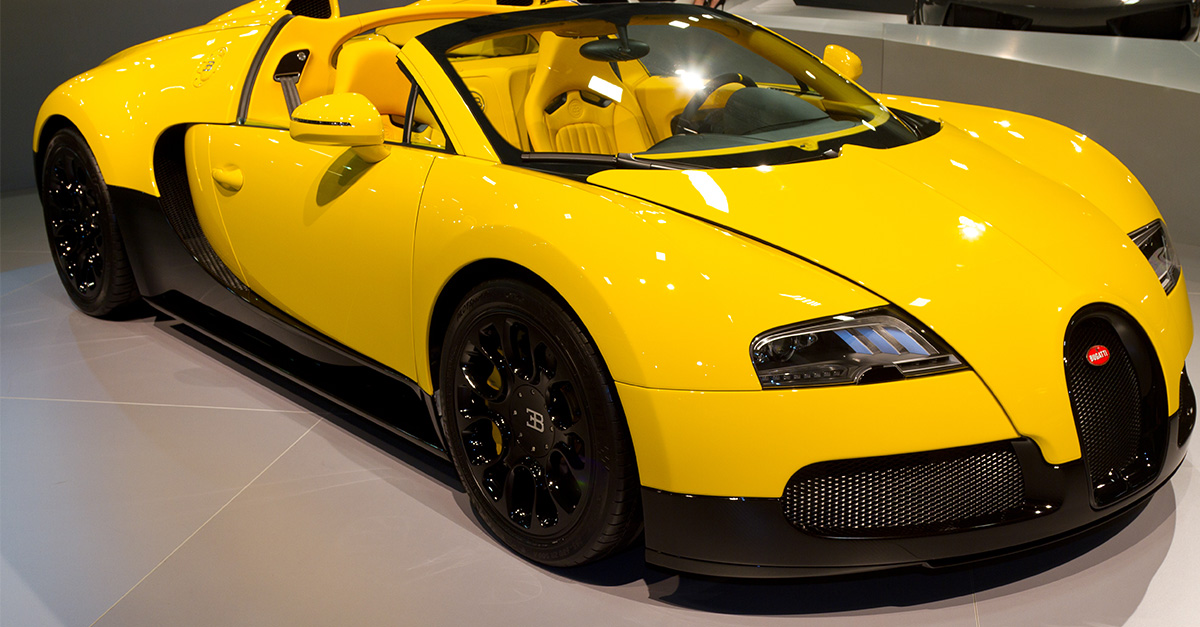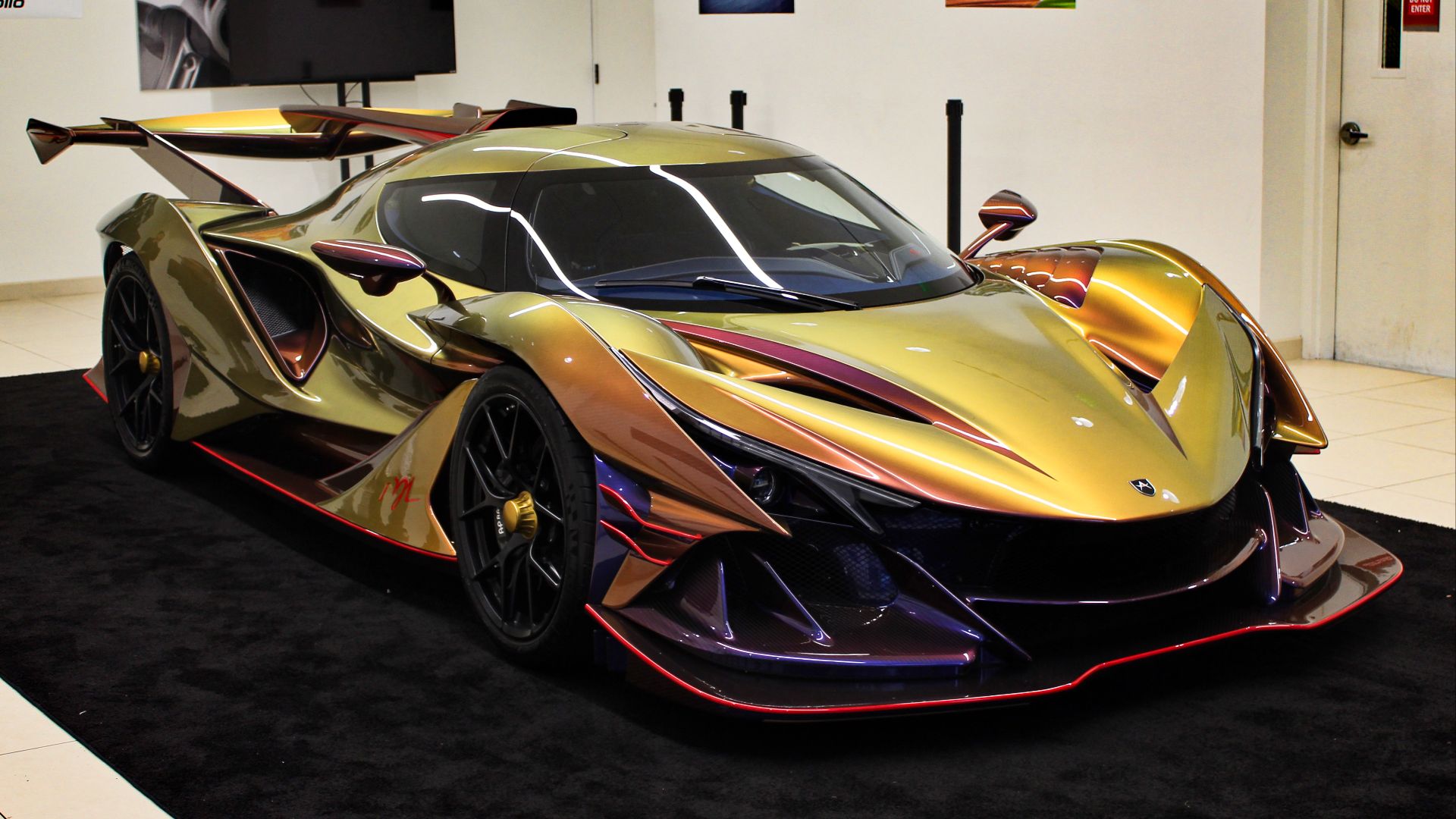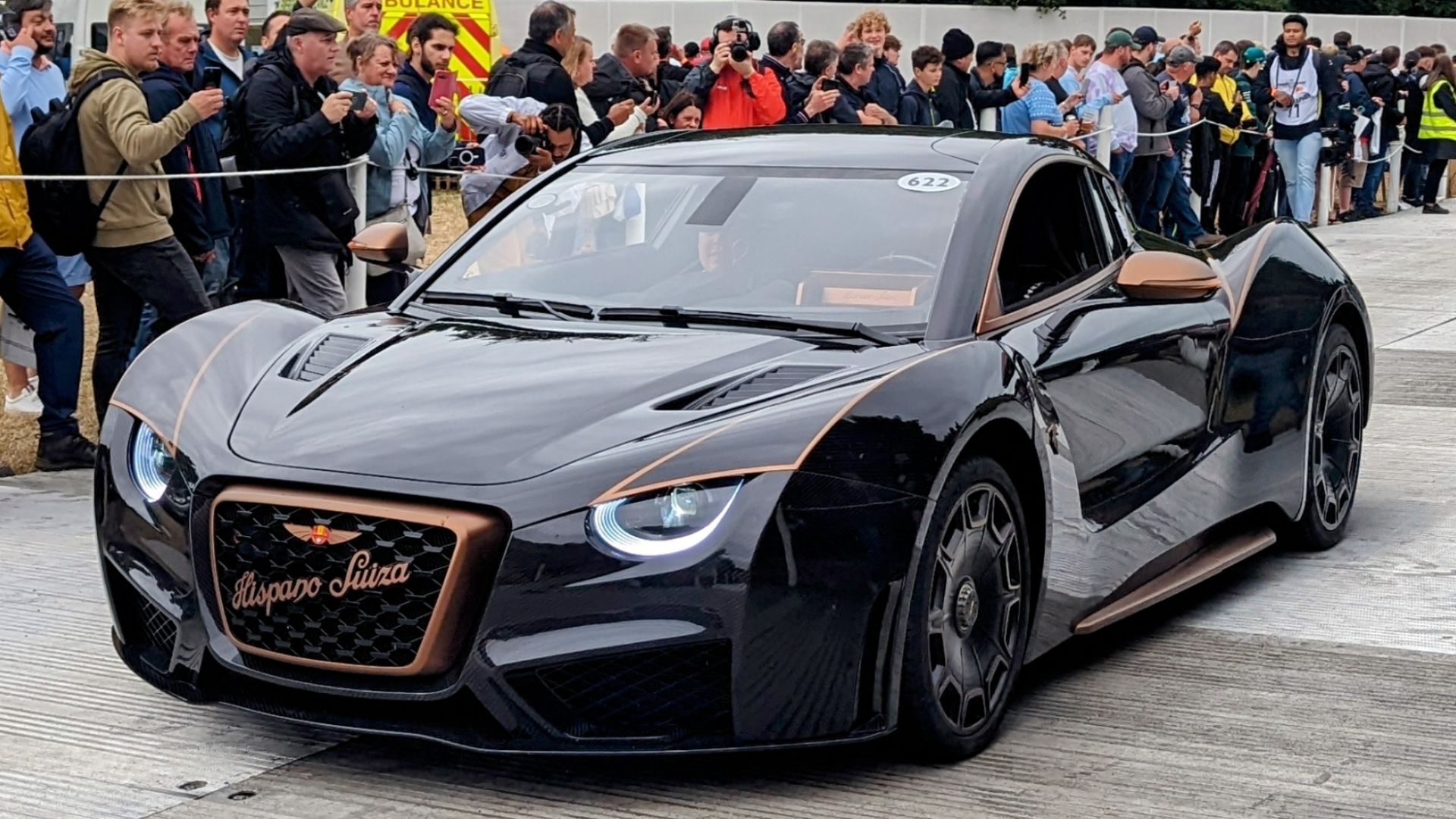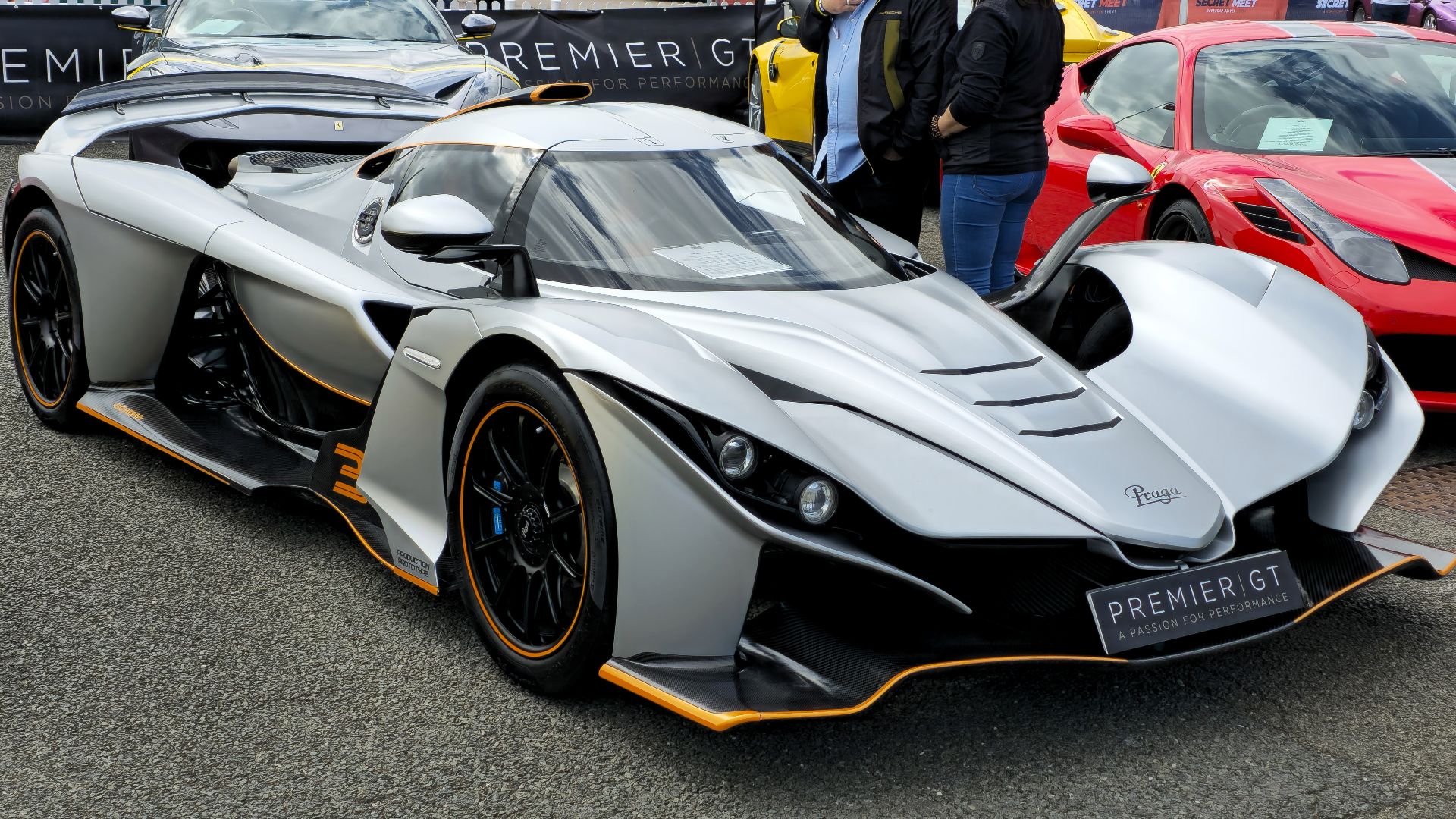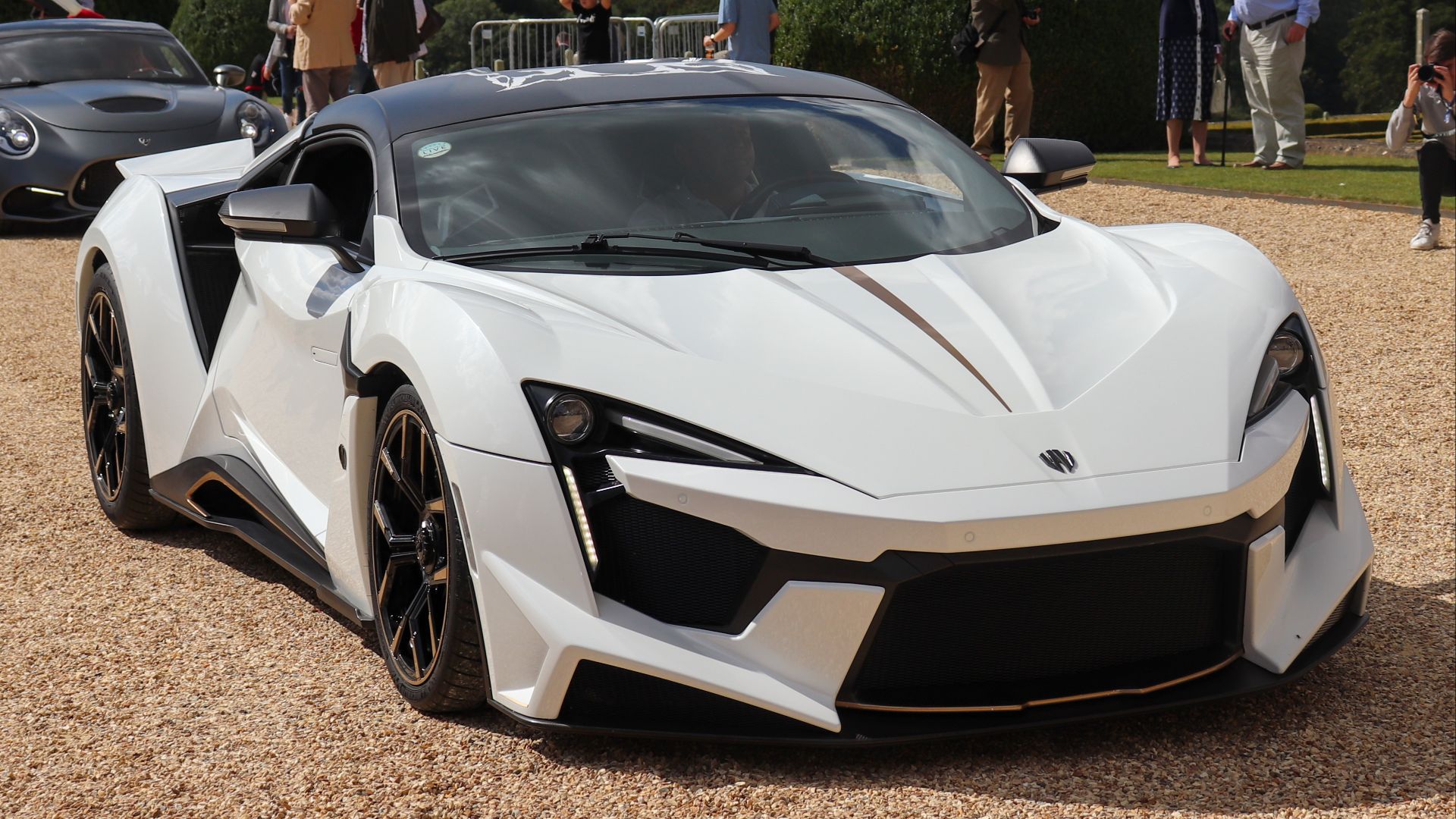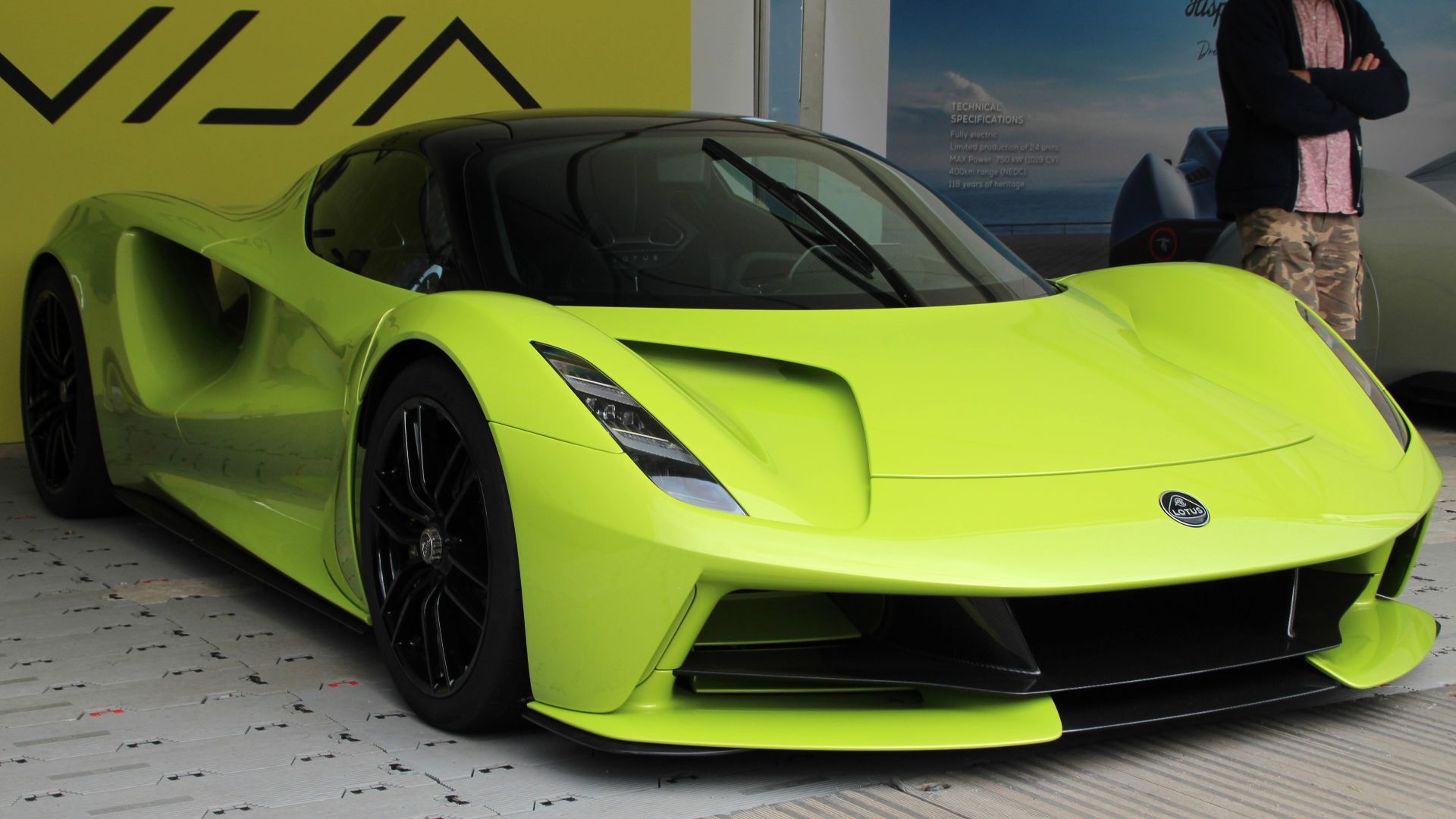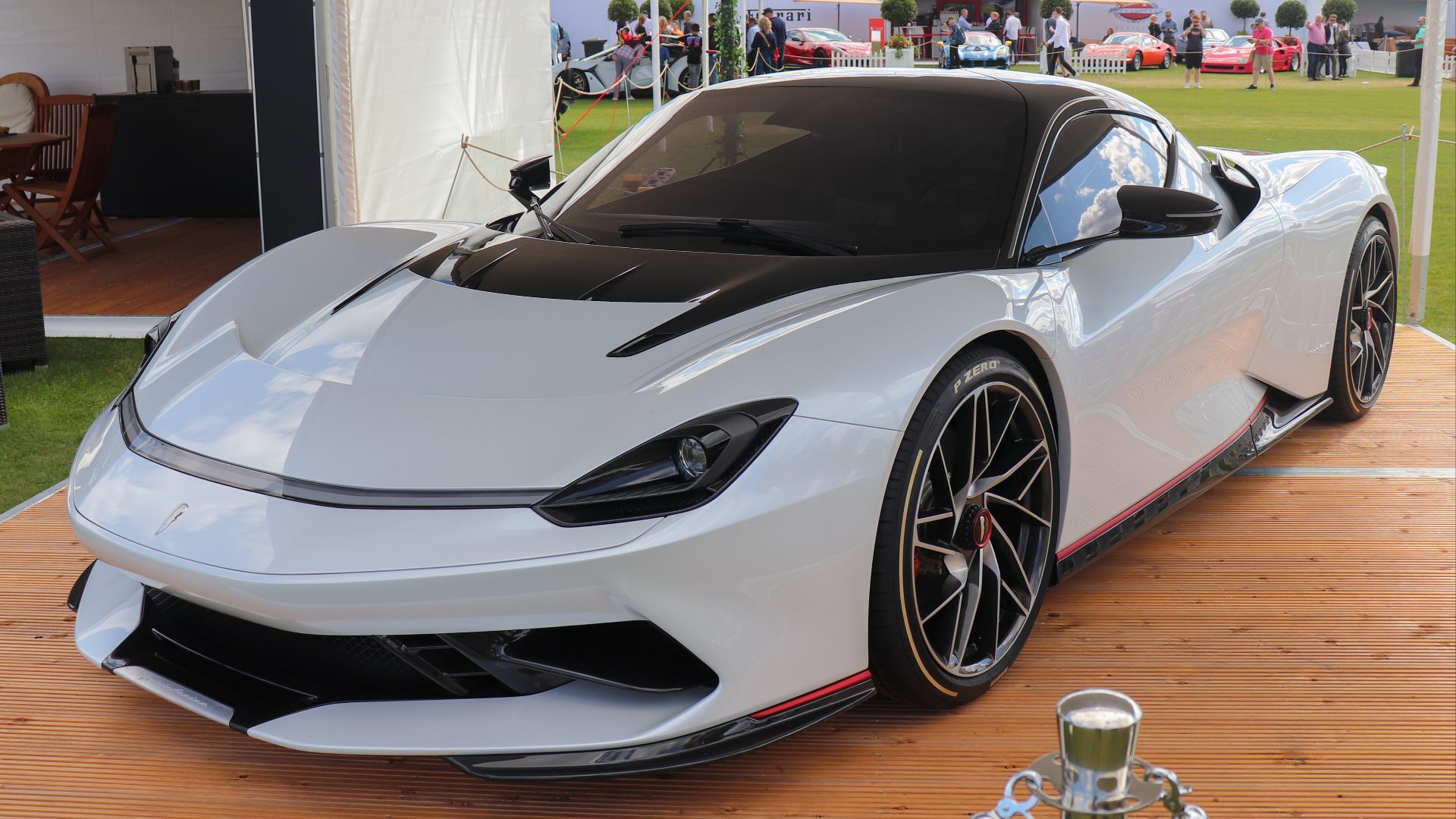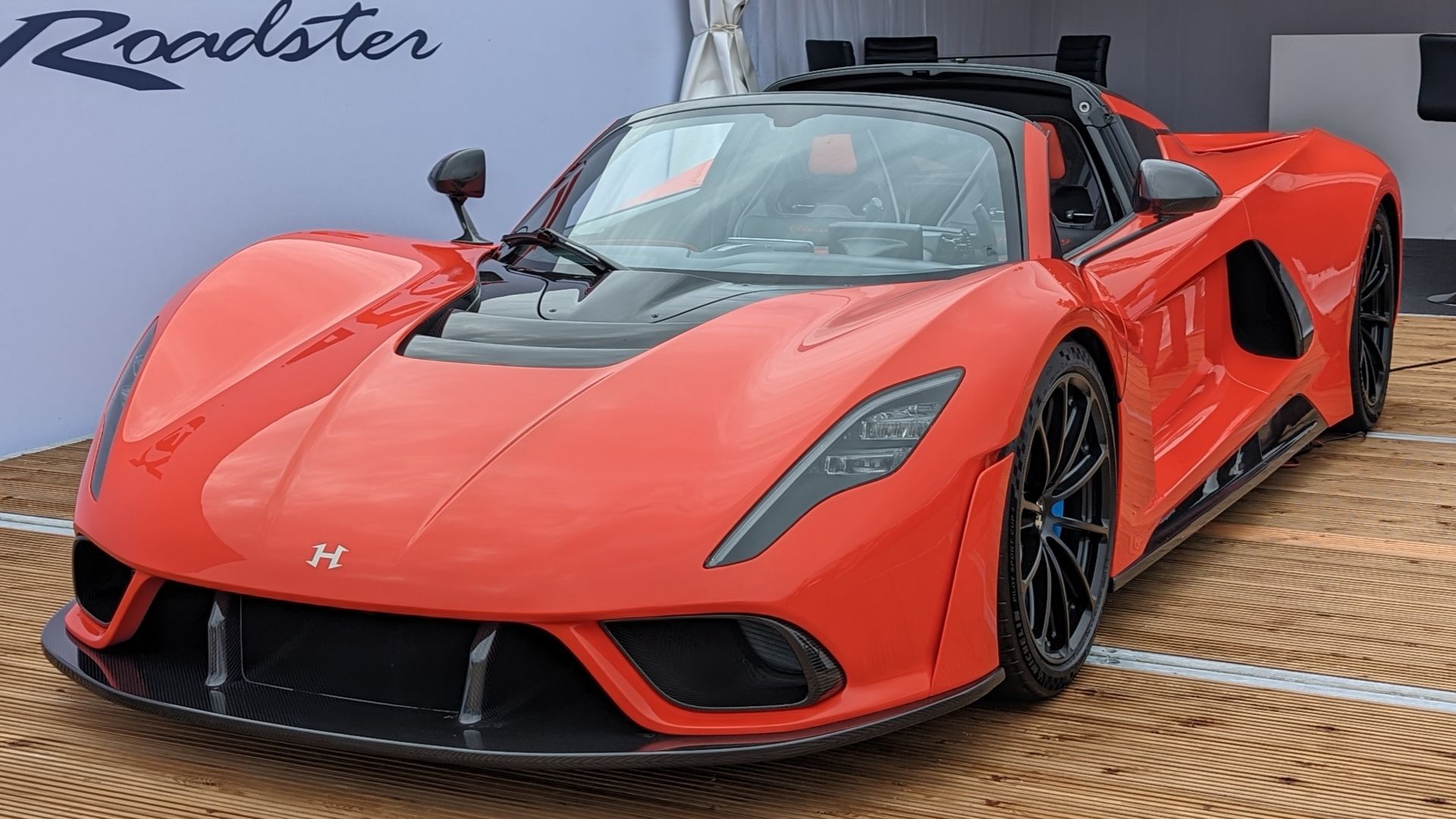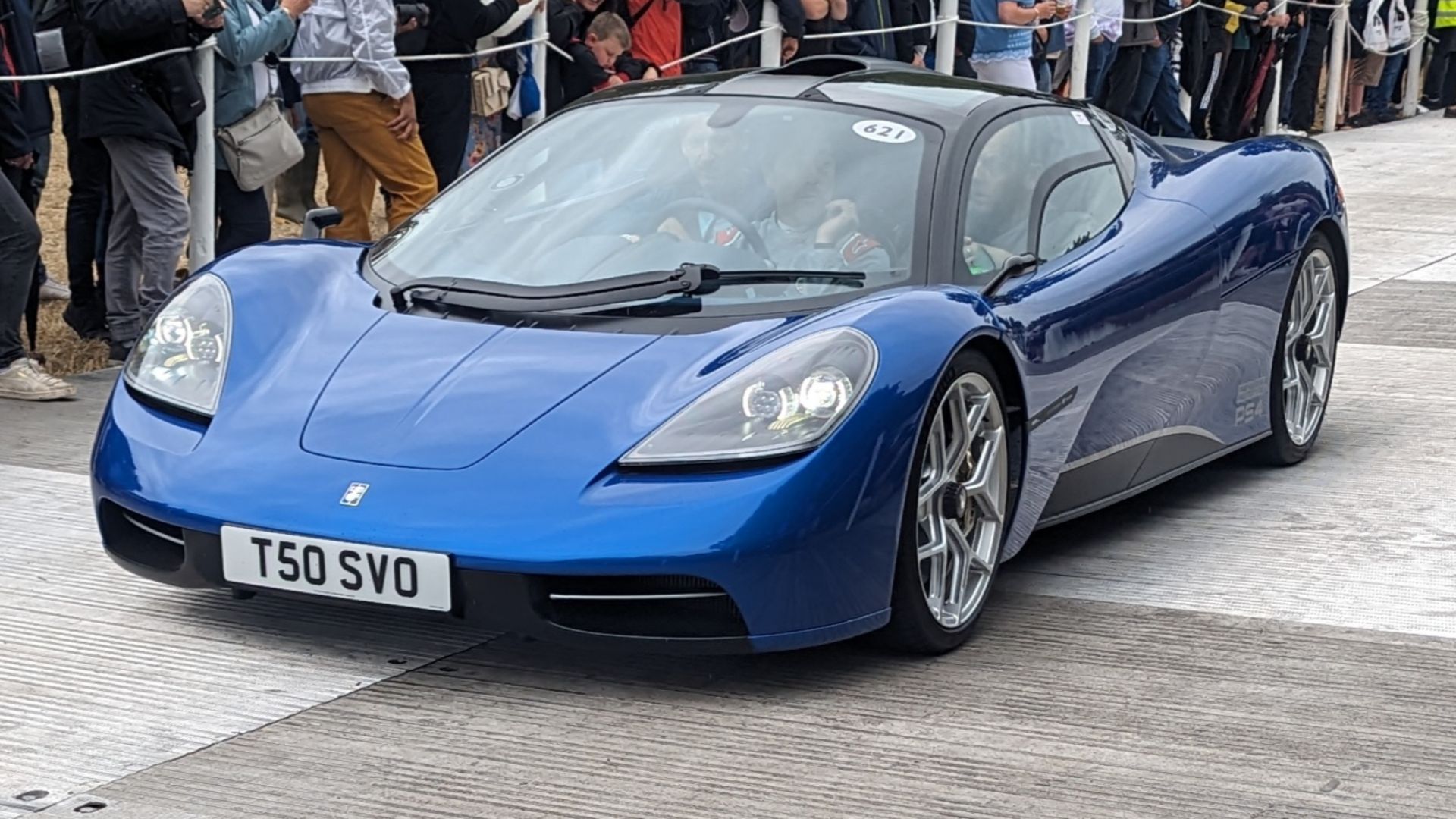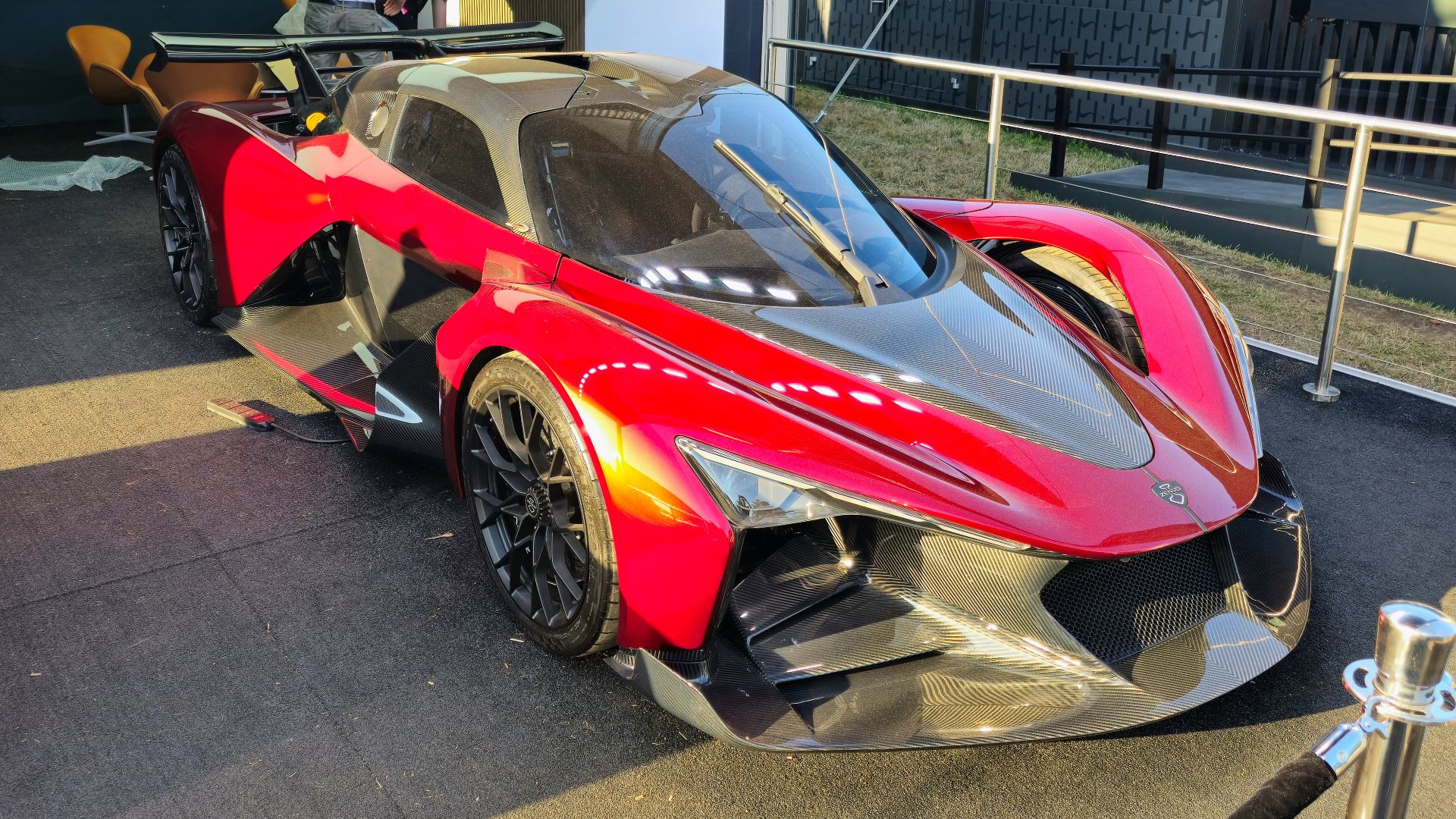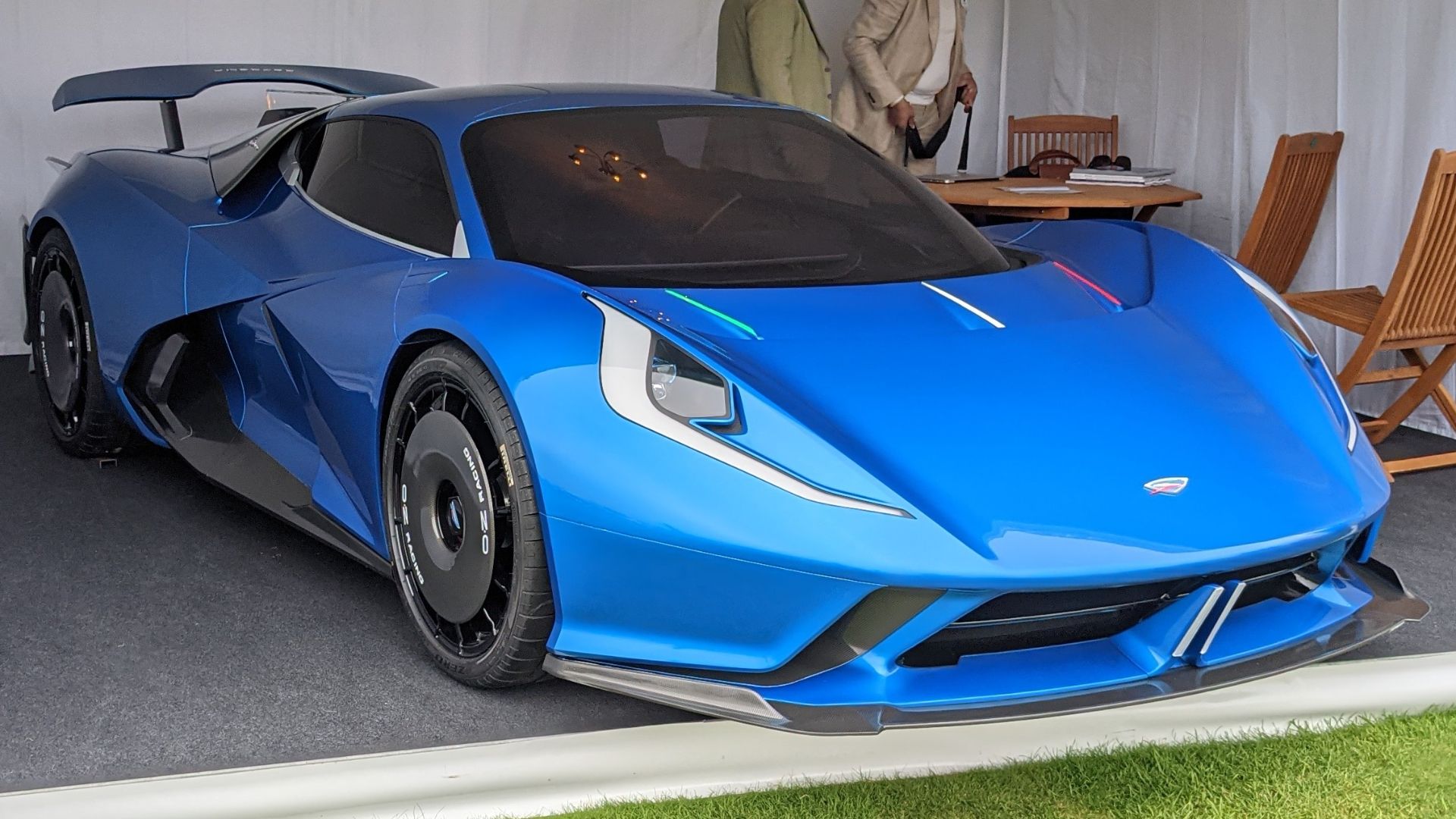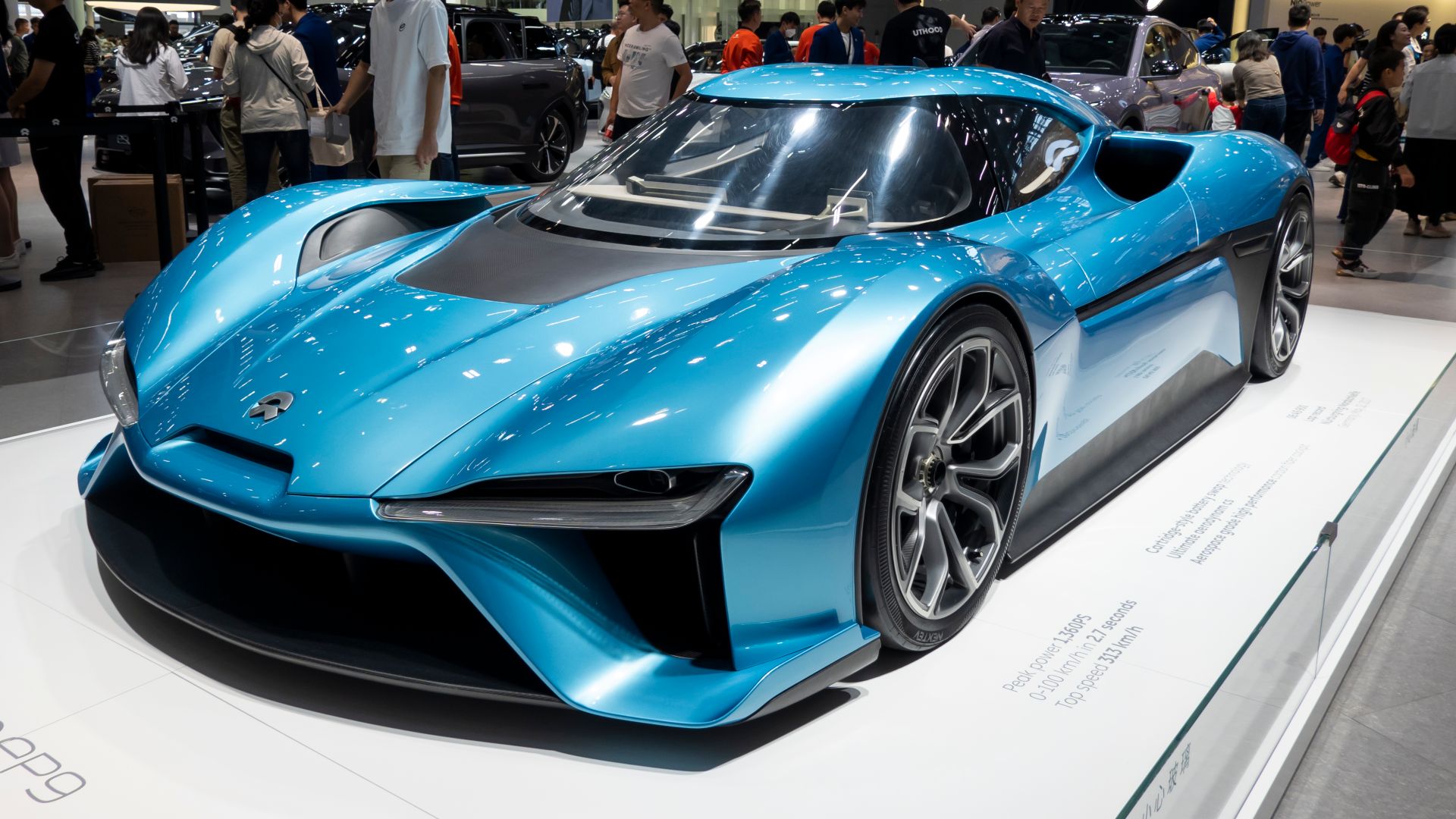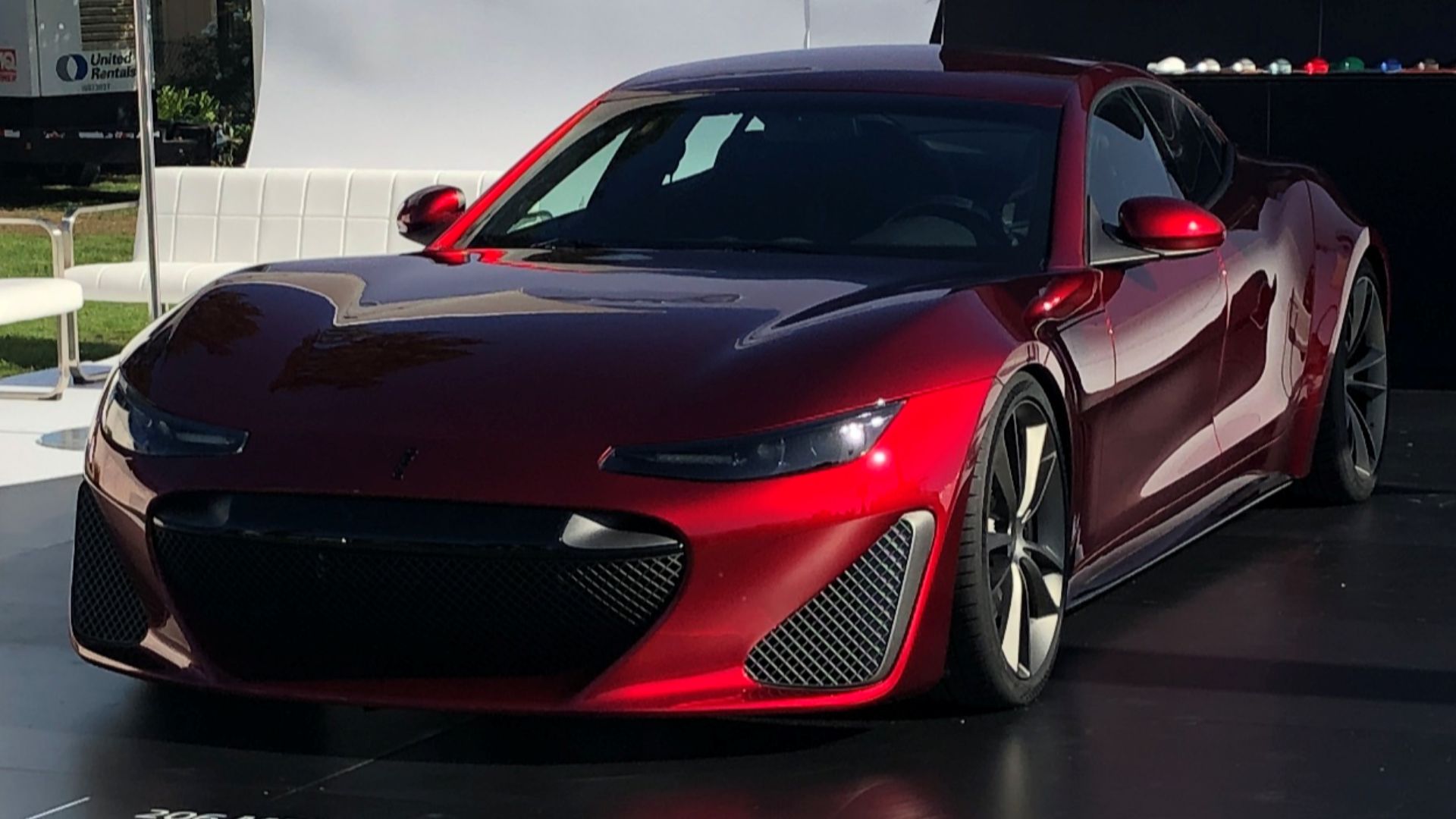These Ultra-Rare Supercars Aren't Your Usual Suspects
Forget the usual Bugatti–Pagani roll call. This is the secret menu: ultra-limited, wildly engineered, sometimes street-legal (sometimes not) missiles that start around a million and rocket up from there. Prices, performance, and why they’re eye-watering—served slide-by-slide for your next supercar group chat flex.
Aspark Owl ($3.5 Million)
Japan’s Aspark Owl is a lightning-fast electric dart boasting ~1,984 HP, sub-2.0s 0–60 MPH, and a top speed of 249 MPH. Its $3.5M price tag comes from its all-carbon monocoque, quad-motor setup, and hyper-limited run. With cutting-edge aerodynamics, exotic construction materials, and meticulous Japanese craftsmanship, it’s a science experiment on wheels designed to prove EVs can dominate the supercar elite.
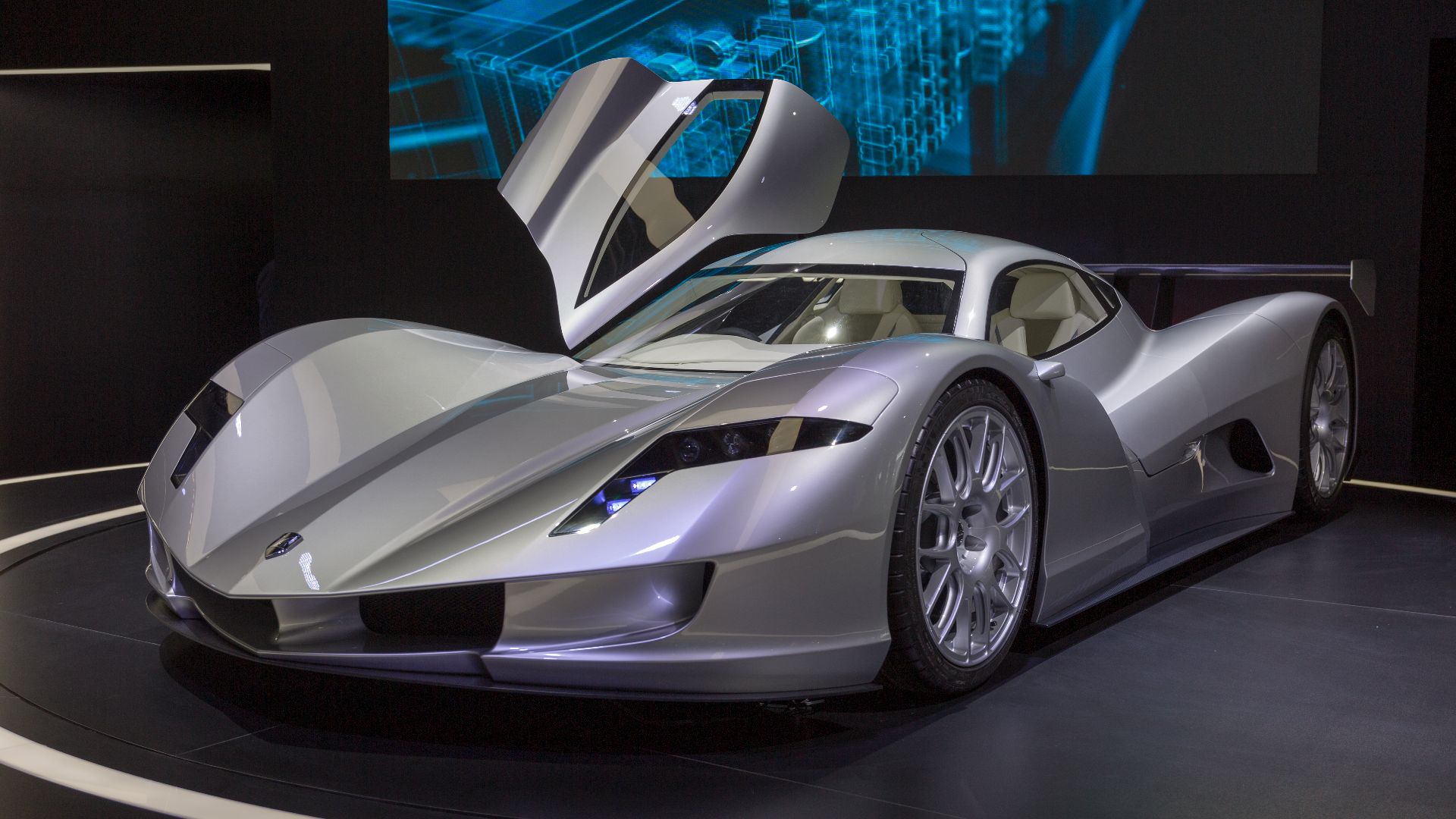 Matti Blume, Wikimedia Commons
Matti Blume, Wikimedia Commons
Apollo Intensa Emozione ($2.5 Million)
The Apollo IE screams with a naturally aspirated 6.3-liter V12 delivering ~780 HP, sub-3.0s 0–60 MPH, and Formula 1-inspired handling. Only ten units exist, ensuring exclusivity. Its design looks like a fighter jet crossed with a bat, dripping in extreme aero and built entirely from carbon fiber. Each car is hand-assembled, delivering pure analog madness in a market dominated by hybrid-electric rivals.
Hispano Suiza Carmen Boulogne ($1.8 Million)
This electric grand tourer revives a historic brand with 1,100+ HP, ~2.6s 0–60 MPH, and a dramatic retro-futurist design. At $1.8M, buyers get handcrafted luxury combined with bleeding-edge EV power. Each model is unique because of the coachbuilt panels, lavish interiors, and a body finished in carbon weave. Production is limited to just 19 units, and every one is tailored to the customer’s specifications.
Praga Bohema ($1.4 Million)
The Praga Bohema is a featherweight weapon at just 982 kg, powered by a tuned Nissan GT-R 3.8-liter twin-turbo V6 producing ~700 HP. This means lightning agility and ~2.3s 0–62 MPH acceleration. Its $1.4M tag reflects track-bred aerodynamics, a fully carbon body, and near-artisanal hand production. Developed with the input of professional drivers, it’s designed to embarrass hypercars double its price.
Delage D12 ($2.3 Million)
The Delage D12 is an F1-inspired hybrid supercar with tandem seating, an 1,100 HP V12 hybrid engine, and a weight-optimized carbon structure. With just 30 units planned, this $2.3M rocket merges heritage with extreme modernity. Its design mimics fighter jets, and customers are even invited to race-driver coaching. Each cockpit is engineered with ergonomics for pilot and co-pilot, making it a motorsport fantasy for the road.
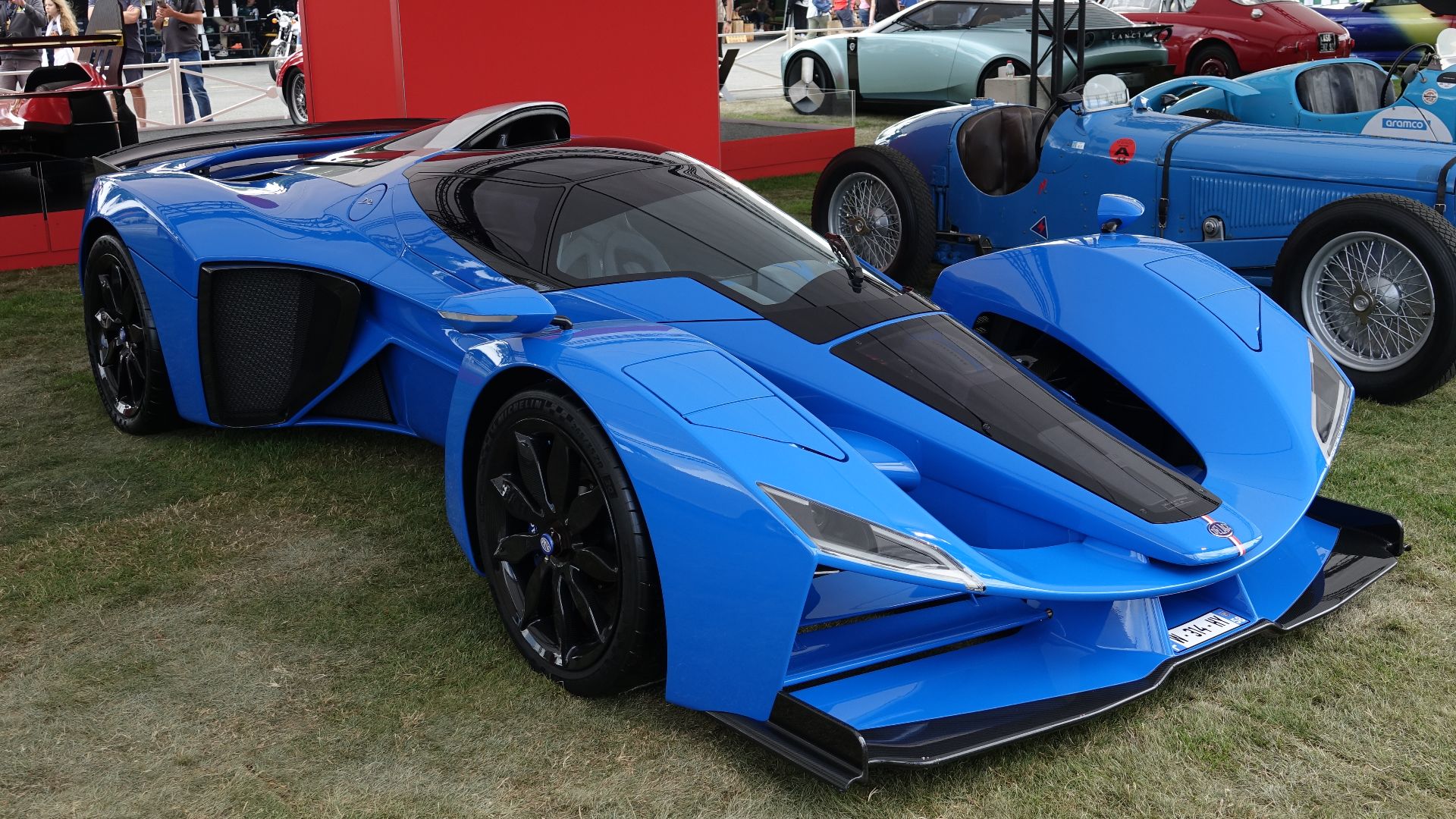 Y.Leclercq©, Wikimedia Commons
Y.Leclercq©, Wikimedia Commons
Naran Hyper Coupe ($1.25 Million)
The Naran Hyper Coupe blends front-engine V8 fury with elegant coupe proportions, producing over 1,000 HP and four-seat usability. This $1.25M rarity is pitched as a “GT3 racer for the road,” hand-built in tiny batches. Its carbon structure and race-derived suspension give it track-car reflexes in a body that still swallows luggage. Buyers can customize almost every detail, ensuring no two look alike.
 4 SEATS & 1,000 BHP - MEET THE NEW KOENIGSEGG CHALLENGER | NARAN, TGE TV
4 SEATS & 1,000 BHP - MEET THE NEW KOENIGSEGG CHALLENGER | NARAN, TGE TV
Mazzanti Evantra Millecavalli ($1.2 Million)
The Evantra Millecavalli is Italy’s dark horse—1,000 HP from a monstrous twin-turbo 7.2-liter V8. Accelerating from 0–62 MPH in ~2.7s, it rivals any hypercar pedigree. Each car is hand-built, with a carbon-fiber chassis and completely bespoke interiors. At $1.2M, it’s rare and fully customizable, emphasizing old-school coachbuilding in a market obsessed with speed records. Only a handful are ever crafted per year.
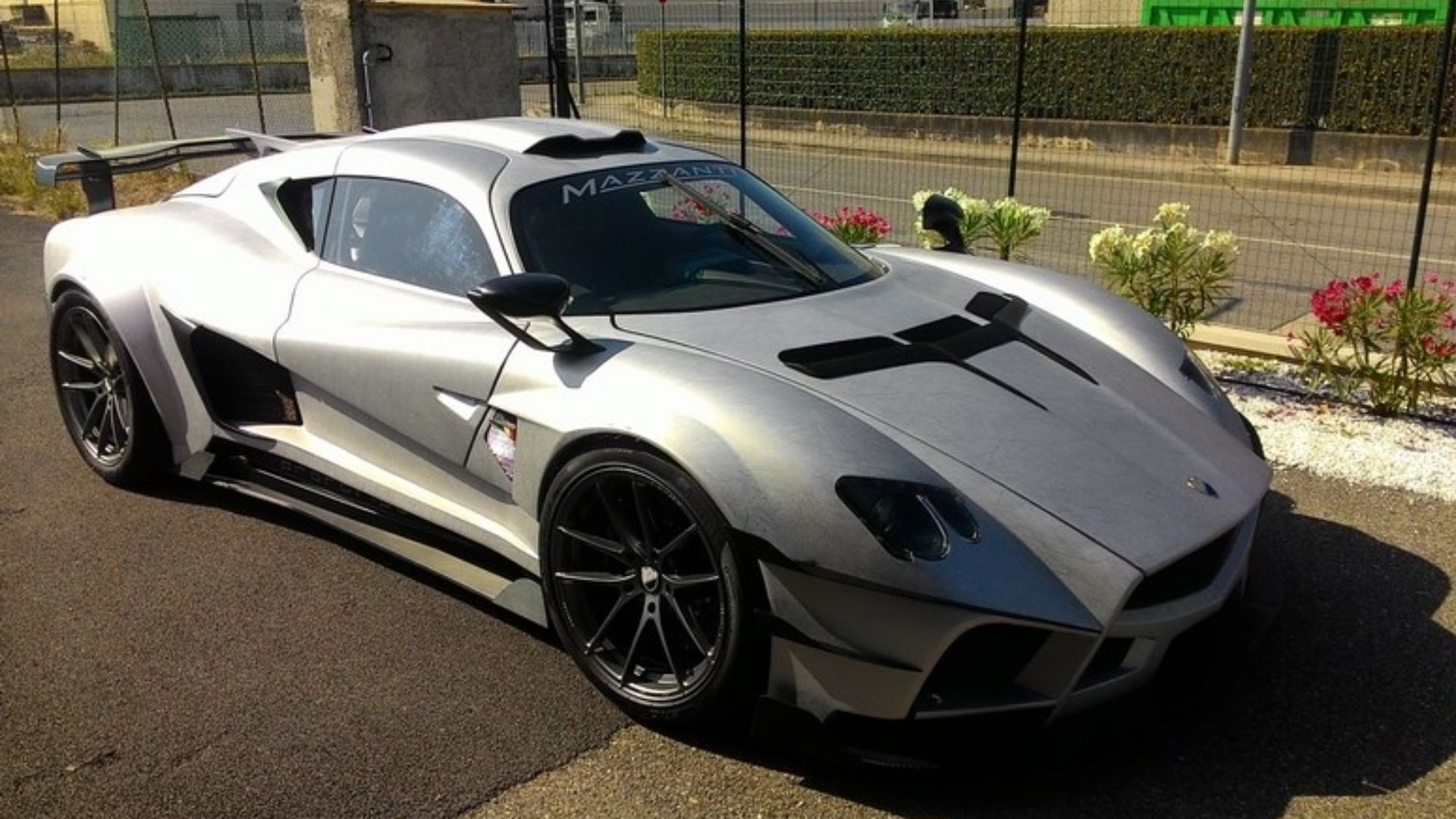 Demolition Man, Wikimedia Commons
Demolition Man, Wikimedia Commons
Arash AF10 ($1.7 Million)
The Arash AF10 is a British hybrid beast, producing ~2,080 HP through a mix of a monstrous petrol engine and four electric motors. Built with a carbon tub, it’s exotic and incredibly rare. Costing $1.7M and up, it delivers otherworldly acceleration with nearly unmatched power-to-weight figures. Its advanced hybrid architecture blends speed with sci-fi technology, turning it into an engineering showcase as much as a supercar.
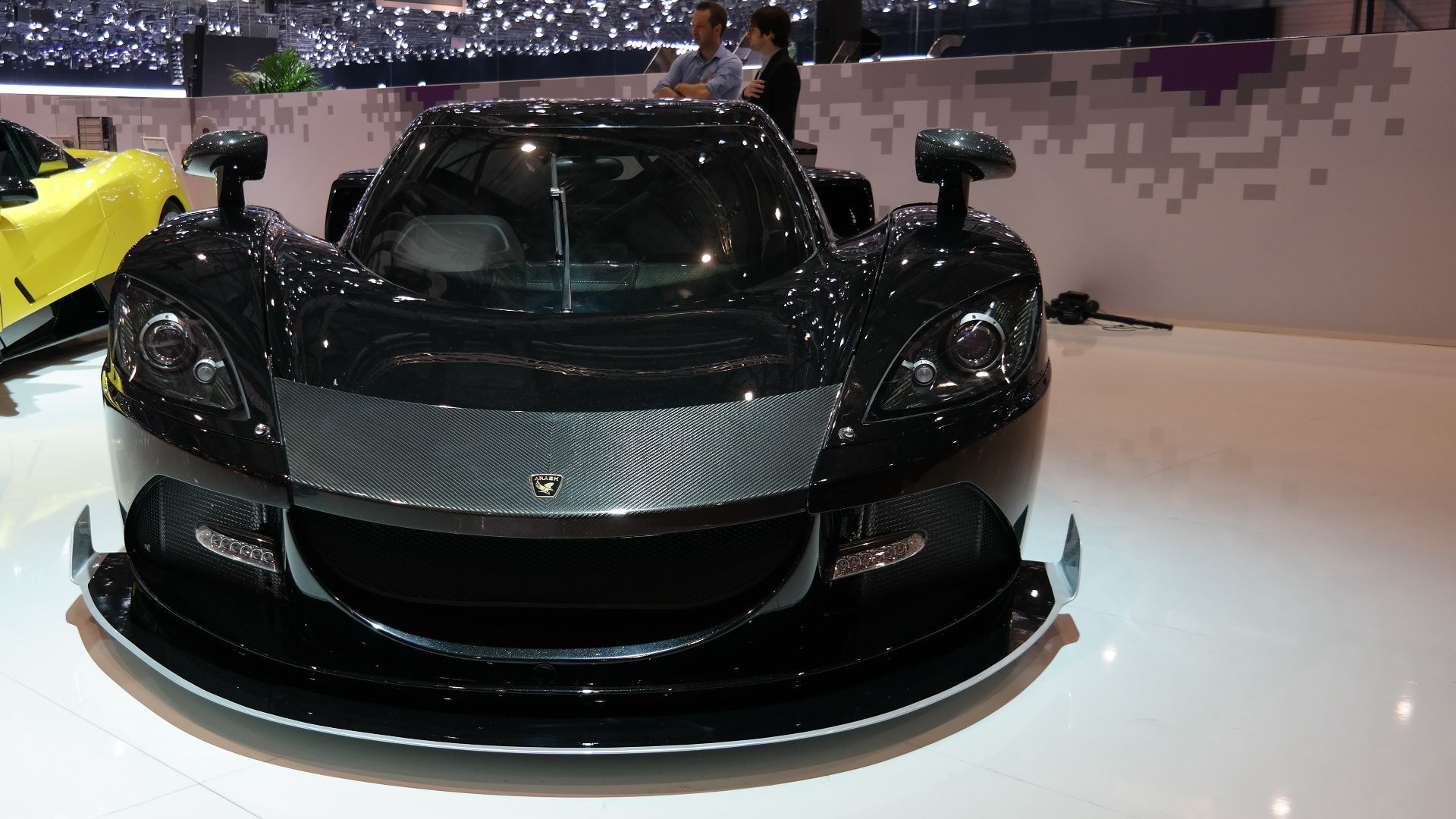 Norbert Aepli, Switzerland (User:Noebu), Wikimedia Commons
Norbert Aepli, Switzerland (User:Noebu), Wikimedia Commons
Milan Red ($2.3 Million)
Austria’s Milan Red serves up ~1,325 HP from a quad-turbo V8, enough for a sub-2.5s 0–62 MPH sprint. Named after a predatory bird, its sculpted carbon body looks like it belongs in a museum. The $2.3M price reflects bespoke engineering, extreme scarcity (99 units planned), and state-of-the-art aerodynamics. Inside, its minimalist fighter-jet cockpit reinforces its ethos as a driver’s car built for speed above all else.
 Hypercar Milan Red Launches in Dubai (Specs & Prices), garage
Hypercar Milan Red Launches in Dubai (Specs & Prices), garage
W Motors Fenyr SuperSport ($1.9 Million)
The Fenyr SuperSport packs ~800 HP from a twin-turbo flat-six, hitting 0–62 MPH in ~2.7s and topping out over 240 MPH. Built in Dubai by W Motors, it’s dripping in exoticism without the Lykan’s gimmicky diamond headlights. Its $1.9M price reflects short production numbers, Gulf-region extravagance, and bespoke styling that guarantees stares wherever it arrives. Every example is a rolling piece of Middle Eastern engineering ambition.
Lotus Evija ($2.5 Million)
Lotus stepped into the EV world with the Evija, a ~2,000 HP monster capable of 200+ MPH and sub-3s 0–62 MPH. At $2.5M, it’s more sculpture than car, with air tunnels carved straight through its body for extreme downforce. Limited to just 130 units, each is a rolling showcase of battery innovation, aerodynamics, and Lotus’s return to halo-car prominence in the electric age.
Automobili Pininfarina Battista ($2.2 Million)
The Battista is Italy’s most powerful production car, delivering ~1,900 HP and sub-2.0s 0–60 MPH acceleration. Its $2.2M price tag reflects not just the power, but Pininfarina’s legendary design credentials. Each car is hand-finished, with endless customization for clients. Combining Rimac tech with Italian style, it proves EVs can be not only brutally fast, but achingly beautiful and luxuriously crafted.
Rimac Nevera ($2.4 Million)
The Croatian Rimac Nevera delivers 1,914 HP, a 256 MPH top speed, and record-shattering sub-2.0s 0–60 MPH runs. At $2.4M, it’s priced for its in-house batteries, electric motors, and torque-vectoring wizardry. With aerospace-level carbon construction and meticulous attention to detail, it’s an engineering marvel. Add ultra-limited production, and it has become the benchmark against which all future EV hypercars are judged.
Hennessey Venom F5 ($3.0 Million)
The Venom F5 is an American missile with a 6.6-liter twin-turbo V8 producing 1,817 HP, aiming for speeds beyond 300 MPH. The $3.0M price buys a carbon monocoque, extreme weight saving, and almost absurd exclusivity. Each one is hand-assembled in Texas. With aerodynamics built for stability at speeds few will ever test, it’s as much a speed experiment as it is a car.
SSC Tuatara ($1.9 Million)
SSC’s Tuatara aims to be one of the fastest cars ever, with up to ~1,750 HP on E85 and a claimed top speed exceeding 300 MPH. At $1.9M, the cost covers an all-carbon fiber construction, aerospace-level aerodynamics, and painstaking development. Only ~100 will be made, ensuring exclusivity. Its body is one of the most aerodynamic road cars ever built, with drag coefficients rivaling jet aircraft.
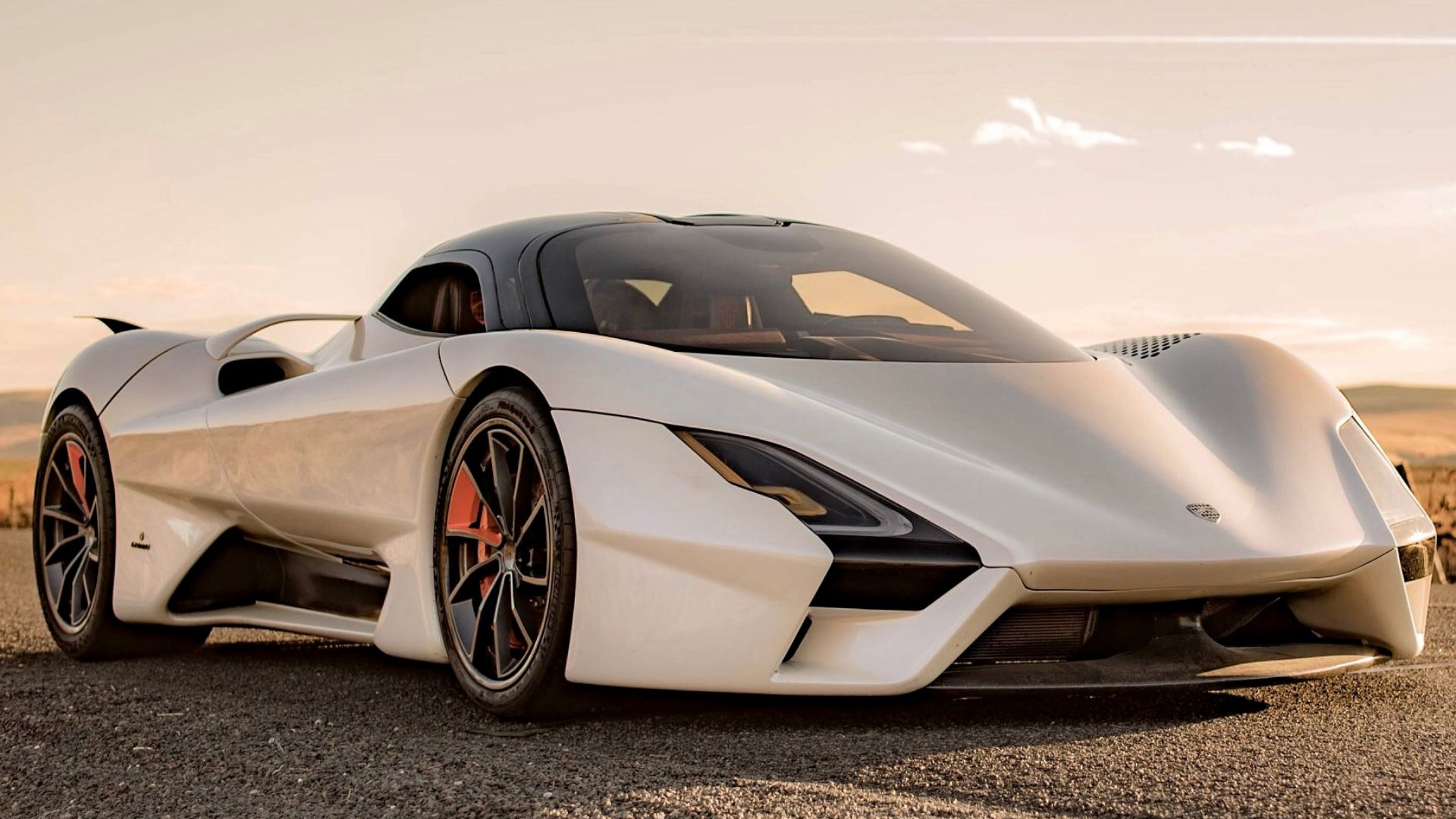 Gontzal Cepeda, Wikimedia Commons
Gontzal Cepeda, Wikimedia Commons
Gordon Murray T.50 ($3.1 Million)
Designed by the man behind the McLaren F1, the T.50 is a purist’s dream. At 986 kg and 654 HP, it’s not about numbers—it’s about feel. The $3.1M masterpiece uses a naturally aspirated Cosworth V12 revving past 12,000 RPM, manual gearbox, and ground-effect fan. Limited to 100 units, each hand-assembled in the UK, it represents the pinnacle of driver-focused design in the modern age.
Zenvo Aurora ($2.8 Million)
Denmark’s Zenvo Aurora combines a hybrid V12 engine with electric assistance, producing ~1,850 HP and promising 280 MPH potential. Priced at $2.8M, it’s as exotic as they come, blending cutting-edge hybrid engineering with bold Scandinavian design. Each example is hand-assembled with an obsessive focus on detail, limited to fewer than 100 cars. It’s both a technical showcase and a rarity built for collectors.
Automobili Estrema Fulminea ($2.2 Million)
The Fulminea is an Italian EV concept realized, boasting over 2,000 HP with solid-state battery technology combined with ultracapacitors. At $2.2M, the cost reflects bleeding-edge research and hand-built exclusivity. It claims staggering acceleration—sub-2.0s 0–60 MPH—and striking Italian styling. Limited runs make it as rare as it is futuristic, blending tomorrow’s powertrains with today’s coachbuilt artistry.
NIO EP9 ($1.5 Million)
The NIO EP9 is a Chinese-built electric hypercar producing ~1,341 HP, capable of demolishing 0–60 MPH in 2.7s and hitting 200 MPH. At $1.5M, the car doubles as a tech statement for NIO’s electric ambitions. Its motorsport-derived platform and lap records at Nürburgring and Circuit of the Americas give it bragging rights. Built in tiny batches, it’s both rare and historically significant.
McLaren Solus GT ($3.6 Million)
Born from a Gran Turismo video game concept, the Solus GT brings fantasy into reality with ~829 HP, a screaming V10, and sub-2.5s 0–62 MPH. At $3.6M, only 25 exist, built as track-only weapons. Its design is radical, with a jet-like canopy and wild aero elements. Buyers don’t just get a car—they get a complete race-team delivery experience with professional coaching and support.
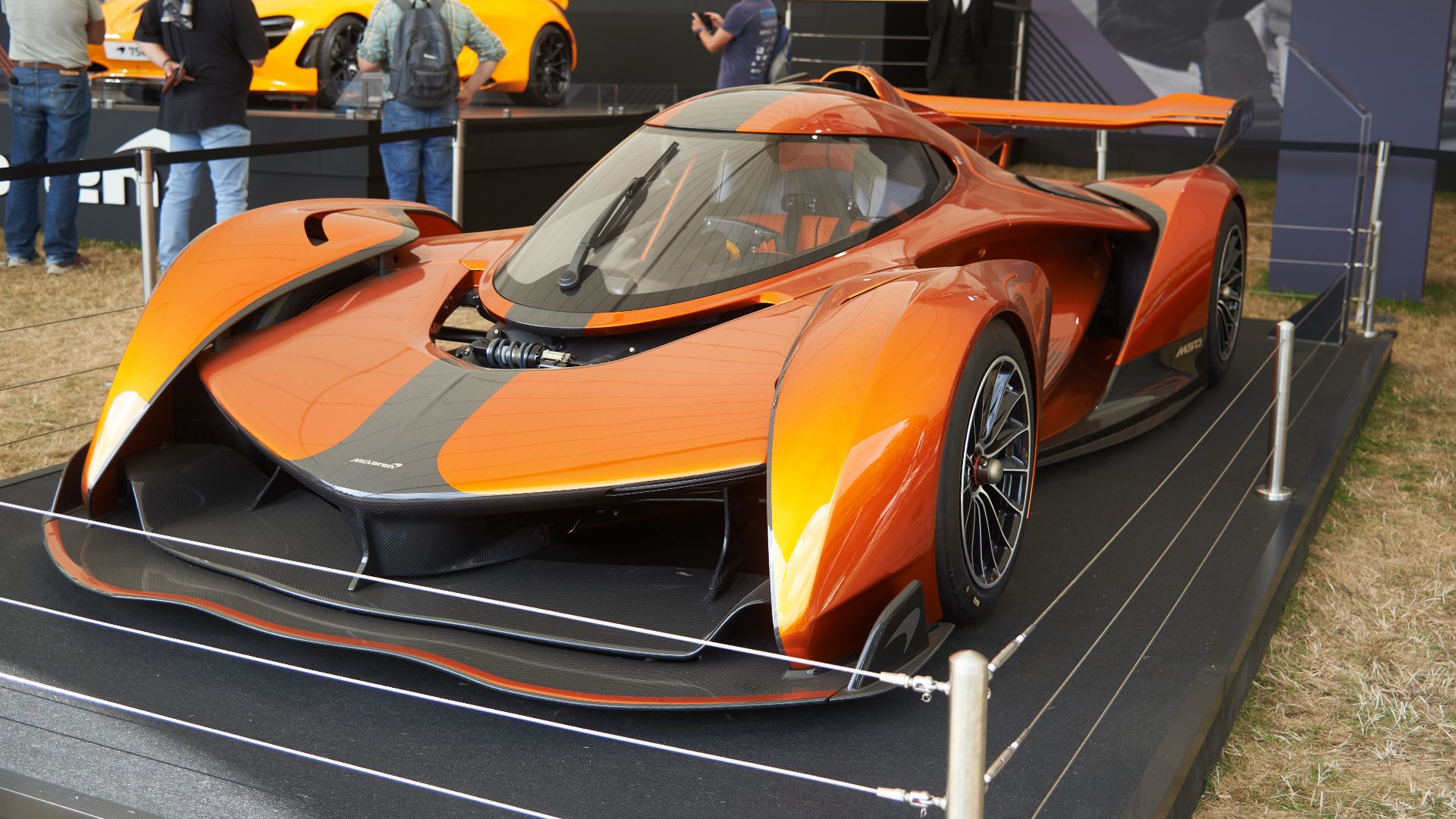 Andrew Basterfield, Wikimedia Commons
Andrew Basterfield, Wikimedia Commons
De Tomaso P900 ($3.0 Million)
The De Tomaso P900 revives an iconic nameplate with a 900 HP V12 revving to 12,300 RPM. Only 18 units will ever exist. At $3.0M, its exclusivity and engineering justify the price. The P900 is track-only, focused on gentleman racers, and offered with tailored events where owners can unleash it. Its design merges classic De Tomaso flair with modern aerodynamics, making it both heritage and hypercar.
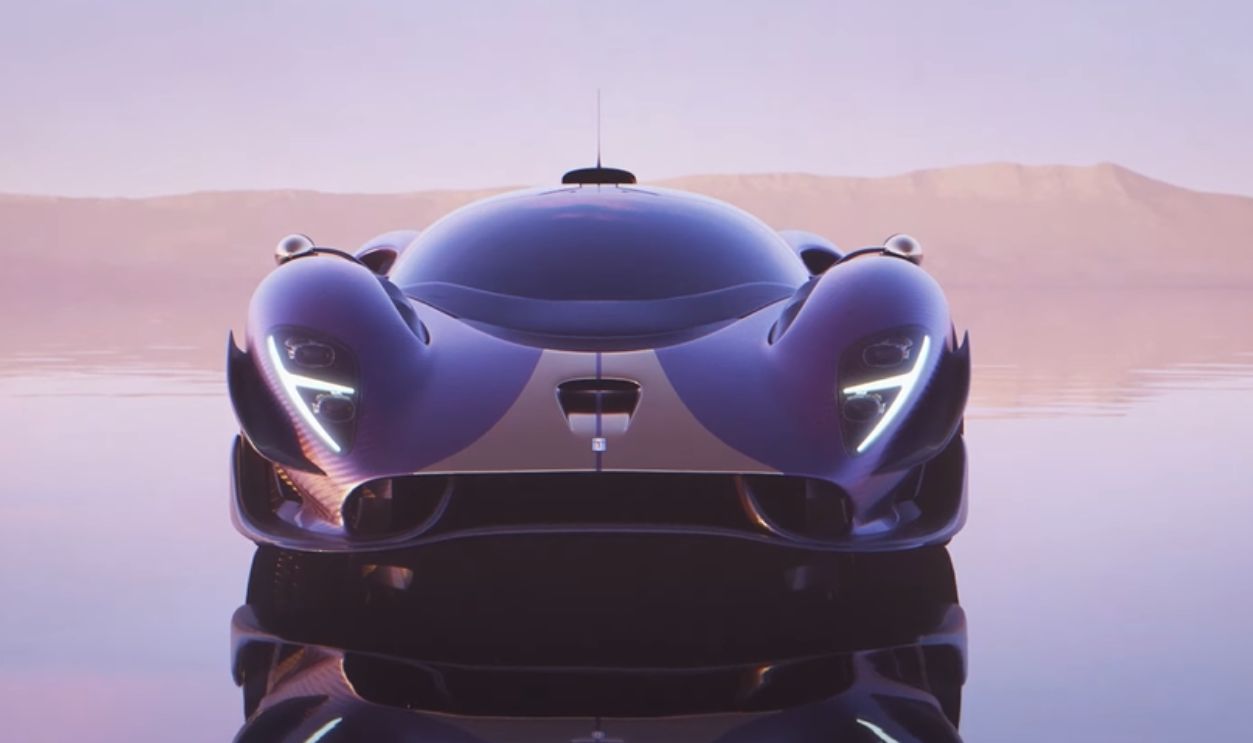 De Tomaso P900 World Premiere, De Tomaso Automobili
De Tomaso P900 World Premiere, De Tomaso Automobili
Drako GTE ($1.25 Million)
The Drako GTE is a Silicon Valley electric sedan that behaves like a hypercar, boasting ~1,200 HP and a top speed exceeding 200 MPH. Costing $1.25M, it’s built from carbon fiber and fitted with four independent electric motors offering mind-bending torque-vectoring. With interiors finished in luxury materials and production capped at ultra-low numbers, it blends tech start-up spirit with supercar engineering.
Rodin FZero ($2.2 Million)
The Rodin FZero is a track-only prototype from New Zealand, designed to rival Formula 1 cars with its extreme lightweight construction and bespoke V10 engine. At $2.2M, the exclusivity comes from radical engineering with almost no regulations to hold it back. Production numbers are tiny—single digits per year. Owners essentially get an unrestricted racing prototype, giving them lap times that embarrass most supercars.
 Rodin FZero – 1500bhp Single-Seat V10 Madness!, Top Gear
Rodin FZero – 1500bhp Single-Seat V10 Madness!, Top Gear
Why These Numbers Are So… Insane
Every one of these cars is a masterclass in scarcity (dozens, not thousands), materials (autoclaved carbon, titanium, aerospace everything), and time (thousands of hand hours). Add experimental powertrains—hybrid V12s, quad-motor EVs—and you’re not just buying speed. You’re buying a rolling experiment in the outer limits of automotive engineering.
 Rodin FZero – 1500bhp Single-Seat V10 Madness!, Top Gear
Rodin FZero – 1500bhp Single-Seat V10 Madness!, Top Gear
You May Also Like:
Famous Racers And The Cars That Made Them Legends
Supercars That Are Surprisingly Bad Daily Drivers

